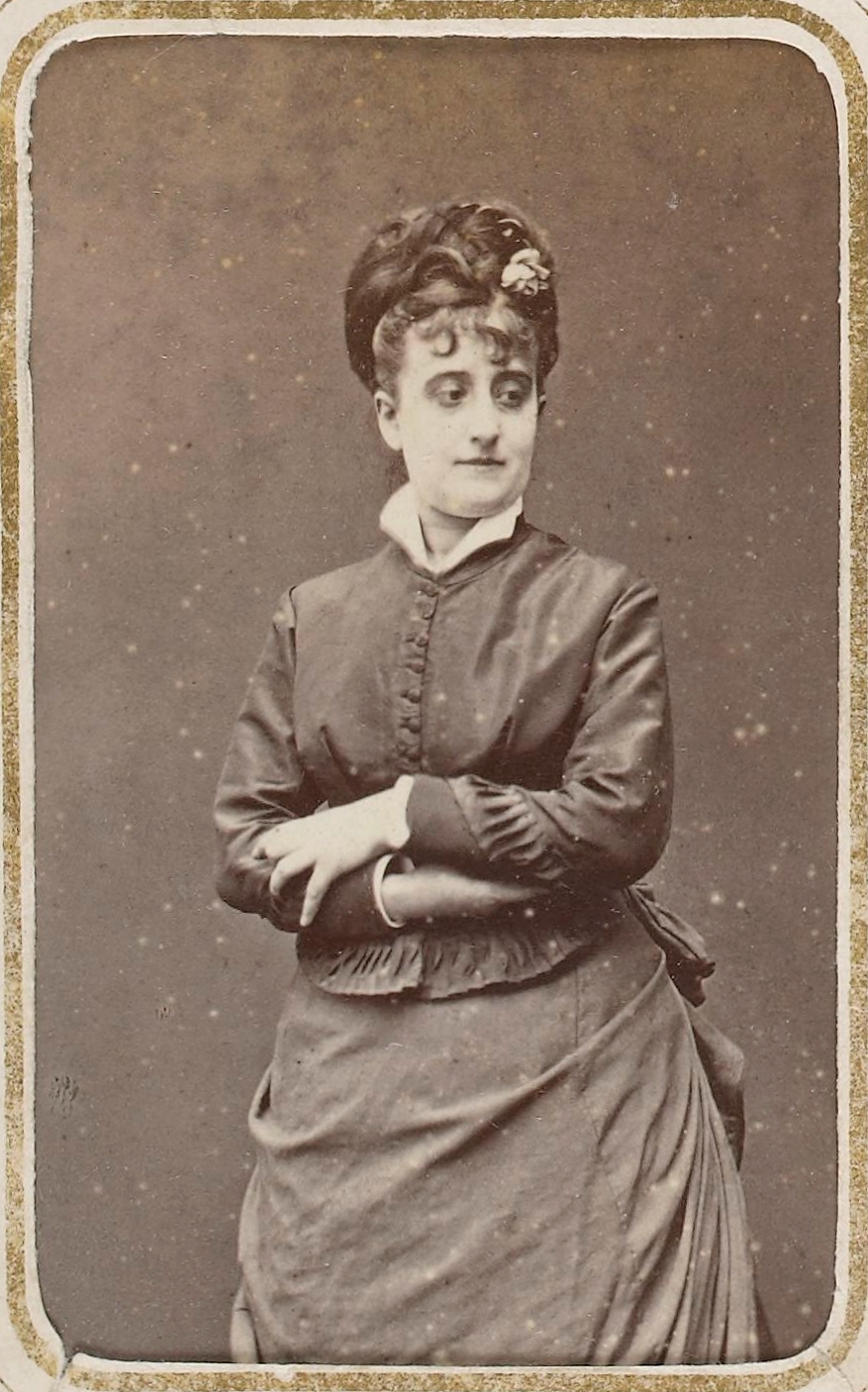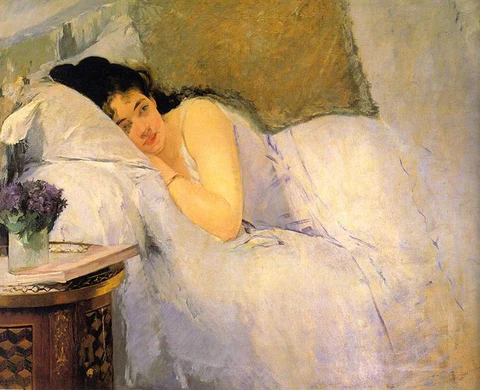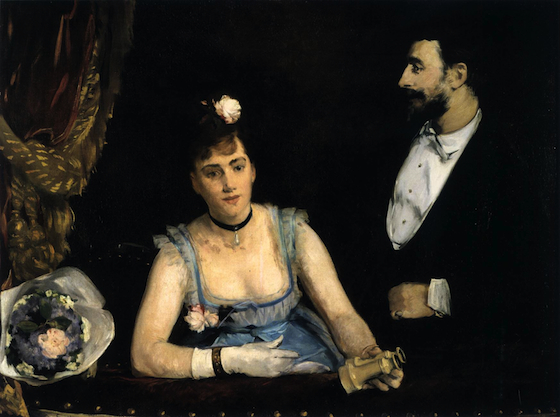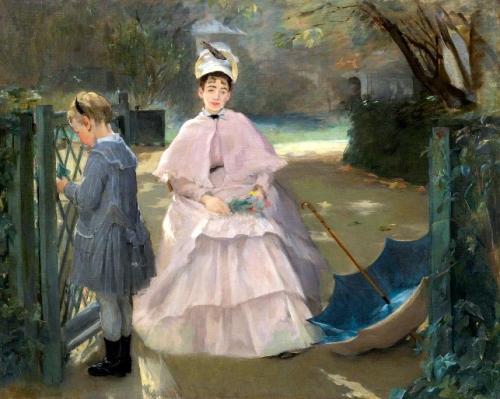- Home
- Art History
- Impressionism
- Eva Gonzales
Eva Gonzales - Impressionist

Introduction to Eva Gonzales
Eva Gonzales (1849-1883) was a
notable French painter during the Impressionist movement, distinguished
not only by her talent but also by her role as a female artist in a
predominantly male-dominated art world. This page explores her life,
work, and contributions to Impressionism.

Some of Gonzales' most famous paintings include "Morning Awakening," "Loge at the Italian Theatre," and "Nanny and Child." Each piece showcases her ability to capture everyday moments with emotional depth and technical precision.
Early Life and Education
Born in Paris, France, Eva Gonzales showed an early passion for the arts. She was the daughter of a novelist and a musician, which provided her with a culturally enriched upbringing. Gonzales received her formal art education under the tutelage of Charles Chaplin, a renowned artist who taught many women painters.
Meeting Édouard Manet
In 1869, Gonzales became a student of Édouard Manet, one of the pioneers of Impressionism. Manet's influence on Gonzales was profound, and she quickly adopted elements of his style. This mentorship was crucial in shaping her approach to painting.
Unique Position in Impressionism
Eva Gonzales was unique among the Impressionists because she never participated in their controversial exhibitions. Instead, she exhibited her work at the official Salon, gaining respect and recognition within traditional art circles. This strategic choice distinguished her career path significantly.
Style and Technique
Gonzales’ style incorporated the light brushstrokes and attention to lighting typical of Impressionist work, yet she maintained a degree of formality that aligned with academic standards. This blend of styles allowed her to appeal to a broad audience.

Loge at the Italian Theatre ~
Gonzales had a talent for showing the individuality and the inner life of her subjects.
The Salon and Her Career
By exhibiting
at the Paris Salon, Gonzales managed to achieve critical acclaim. Her
works were celebrated for their vibrant clarity and the delicate way she
portrayed her subjects, particularly in her representations of women in
domestic settings.
Influence on Other Artists
Although not
as widely recognized as some of her contemporaries, Gonzales influenced
a number of women artists. Her success in the public and critical eye
helped pave the way for future generations of women in art.
Teaching and Legacy
Eva
Gonzales also took on students, passing along her technique and
knowledge. Her legacy lies in her nuanced balance of Impressionism with
conventional methodologies, making her work both a continuation and a
challenge to the norms of her time.
Early Demise
Tragically,
Gonzales' career was cut short when she died at the age of 34, just
days after giving birth to her daughter. Her premature death marked a
significant loss to the art community.

Her Artistic Philosophy
Gonzales
believed in the power of observation. Her paintings often reflect a
keen awareness of the subtleties of her environment, demonstrating her
philosophical commitment to capturing the "truth" of the moment.
Critical Reception
Throughout
her career, critics lauded Gonzales for her exceptional skill and
unique perspective. She was often commended for her ability to infuse
traditional subjects with modern techniques and sensibilities.
Retrospective Impact
In
retrospect, art historians view Eva Gonzales as an integral part of the
Impressionist movement, highlighting her ability to navigate the
challenges of the artistic community of her time while maintaining her
individual artistic identity.
Comparisons with Other Impressionists
While
Gonzales shared many qualities with her Impressionist peers, her
commitment to Salon exhibitions sets her apart. This helped her work
gain recognition in an era when many Impressionist works were criticized
or overlooked.
Integration into Art Lessons
For high
school teachers, incorporating Eva Gonzales into an art lesson provides a
rich narrative about the broader scope of Impressionism. Her story can
serve as an inspiration and as a critical case study in the evolution of
artistic movements.
Techniques for Classroom Discussion
Teachers
might focus on discussing Gonzales' technique, the influence of her
mentors, and her strategic career decisions. This can lead students to
appreciate the diverse strategies artists use to navigate their cultural
landscapes.
Creating Inspired Artwork
Students can be
encouraged to create their own Impressionist artworks, using light and
brushstrokes to capture moments from their daily lives, much like
Gonzales did. This hands-on approach helps deepen their understanding of
the style.
The Importance of Visibility
Eva Gonzales'
story also highlights the importance of visibility and recognition in
the art world, especially for women artists. Discussions can revolve
around the challenges she faced and how she managed to carve out a space
for herself.
Her Role as a Woman in Art
Discussing
Gonzales in the context of gender dynamics within the arts provides a
valuable lesson on the history of women's participation and influence in
cultural sectors.
The Personal Touch in Gonzales' Work
Examining
Gonzales’ personal life through her art allows students to explore how
personal experiences can influence artistic expression and style, making
artworks more relatable and profound.
Lesson Ideas for Teachers
Evaluation of Her Work
Analyzing
specific works by Eva Gonzales in class can help students hone their
critical thinking skills and ability to interpret art beyond the surface
aesthetics.
Conclusion of the Impressionist Era
Understanding
Gonzales' place in the timeline of Impressionism helps students place
her contributions within the larger narrative of the movement’s
evolution.
The Future of Art Education
Incorporating
artists like Eva Gonzales into curricula ensures a more diverse and
comprehensive understanding of art history, promoting inclusivity and
broader perspectives.
Artistic Influences and Inspirations
Exploring
who influenced Eva Gonzales and whom she influenced offers insights
into the interconnected nature of the art community during the
Impressionist era.
The Significance of Mentorship
The role
of mentorship in Gonzales' life underscores the importance of guidance
and inspiration in developing one's artistic skills and philosophies.
Opportunities for Further Research
Teachers
can encourage students to research more about lesser-known artists like
Gonzales, fostering a spirit of discovery and curiosity about art
history
Reflecting on Eva Gonzales’ Legacy
Finally,
reflecting on the lasting impact of Eva Gonzales on the art community
and the ongoing recognition of her work encourages a deeper appreciation
of historical contributors to the arts—both famous and relatively
unknown.